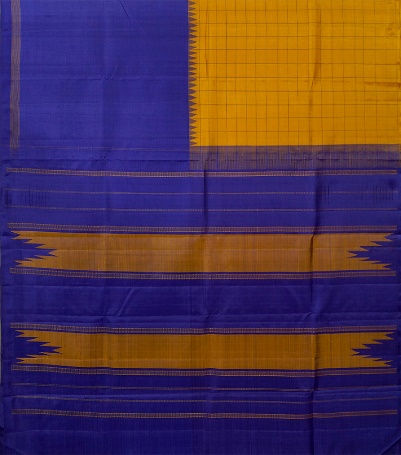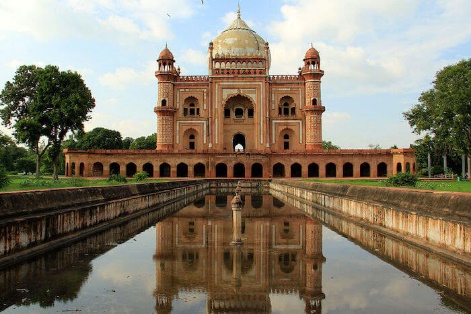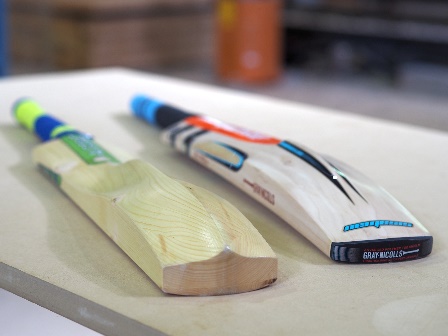Prelim Snippets 20-07-2019
ARANI SILK SAREE

Context:Union Minister for Ministry of Textiles informed the Lok Sabha about the Arani Silk Saree.
About Arani Silk Saree:
- It is a traditional sari made in Arani, a town in Tiruvanamalai district of Tamil Nadu
- The silks from the town of Arani in Tiruvannamalai are equally famous as the Kanjivaram; but they are lighter than them.
- The sarees are woven with mulberry silk in warp and weft, with or without too much Zari.
- The highlight of an Arani pattu is the “thazamboo” border motif.
NAG MISSILE
- Context: Indian Army has successfully carried out summer user trials of third Generation Anti-Tank Guided Missile NAG at Pokhran Field Firing Ranges.
About NAG Missile:
- It is a third generation “fire-and-forget” anti-tank guided missile.
- It is developed by Defence Research and Development Organisation (DRDO) under the Integrated Guided Missile Development Program and is manufactured by Bharat Dynamics Limited.
- Anti-Tank Guided Missiles are primarily designed to hit and destroy heavily armored military vehicles.
- It can attain speed of upto 230 metres per second and can hit the target ranged between 3 to 7 km.
Other Variants of NAG:
Helina (Helicopter-launched Nag):
- It is the helicopter launch variant of Nag, that can be fired from Dhruv advanced light helicopter and HAL Rudra attack helicopter.
- 8 It is a heavier and longer-range version of the vehicle mounted Nag missile with a 7-km range
NAG missile carrier (NAMICA):
- The carrier is capable of carrying 12 missiles with 8 in ready-to-fire mode.
- It is equipped with a thermal imager for target acquisition.
- The robust imaging algorithm has made the missile hit the target at four-kilometre distance even in severe summer desert conditions which is unique in its class.
DEEKSHARAMBH- A GUIDE TO STUDENT INDUCTION PROGRAMME
Context: Union Ministry of Human Resource Development (HRD) released UGC Guide to Student Induction Programme – “Deeksharambh”.
- Deeksharambh is a Guide to Student Induction Programme developed by UGC.
- The Programme engages with the new students as soon as they come into the institution, before regular classes start.
- At the start of the induction, the incumbents learn about the institutional policies, processes, practices, culture and values, and their mentor groups are formed.
Objectives:
- To help new students adjust and feel comfortable in the new environment,
- Inculcate in them the ethos and culture of the institution,
- Help them build bonds with other students and faculty members and
- Expose them to a sense of larger purpose and self-exploration.
SOLAR CHARKHA MISSION
- Context: Union Ministry of Micro, Small & Medium Enterprises (MSME) has notified that total 36 proposals have been shortlisted by Khadi and Village Industries Commission (KVIC) under the Solar Charkha Mission.
About Solar Charkha Mission:
8 It has been launched by Union Ministry of MSME for implementation of 50 Solar Charkha Clusters across the country with budget of Rs. 550 Crore for year 2018-19 and 2019-20
8 It envisages generating direct employment for nearly one lakh persons especially in rural areas and contribute to the green economy. Solar Charkha units have been classified as Village Industries. It also seeks to link five crore women across the country to the initiative.
Objectives of Schemes:
- To ensure inclusive growth by generation of employment, especially for youth and women, and sustainable Development through solar Charkha Clusters in rural areas.
- To Boost Rural Economy and help in arresting migration from rural to urban areas.
- To Leverage low – cost, innovative technologies and processes for sustenance. Khadi and Village Industries Commission (KVIC) has been designated as its implementing agency.
Target:
- To cover 50 solar clusters across the country, whereby approx., 1,00,00 artisans / Beneficiaries are to be covered under various scheme Components.
Coverage:
- It is being implemented in all states of India.
- The geographical distribution of these clusters is throughout country, with at least 10% located in J & K and hilly states, North Eastern Region (NER).
- It gives special focus to 117 aspirational districts for soliciting project proposals under it.
ETHANOL BIOREFINERY- BHANDARA
- Context: Bharat Petroleum Corporation Limited (BPCL) to set up Maharashtra’s first ever ethanol biorefinery in Bhandara’s Makardhokda village.
Background:
- The State government has finalised the location along with BPCL and it will be set up in Bhandara’s Makardhokda village.
- The plant will manufacture ethanol from rice straw.
- The project will utilise 2 lakh tonne of rice straw annually and has a capacity to produce 700 tonne of biofuel.
- This project is one among 12 such refineries planned in different States.
- The National Policy on Biofuels, 2018, aims to increase the percentage of ethanol in petrol and diesel.
- Currently, it is at nearly 2% in petrol, while in diesel, biofuel is less than 0.1%.
- An indicative target of 20% of ethanol in petrol and 5% of biodiesel in diesel is proposed by 2030.
What Is a Biorefinery?
- A biorefinery is a facility that integrates biomass conversion processes and equipment to produce fuels, power, and value-added chemicals from biomass.
- Biorefinery is analogous to today’s petroleum refinery, which produces multiple fuels and products from petroleum.
- By producing several products, a biorefinery takes advantage of the various components in biomass and their intermediates, therefore maximizing the value derived from the biomass feedstock.
PROJECT MANAV: HUMAN CELL ATLAS
- Context: The Department of Biotechnology (DBT) launched ‘MANAV: Human Atlas Initiative’, a project for mapping every tissue of the human body to help understand better the roles of tissues and cells linked to various diseases.
About MANAV:
- The comprehensive map of the human body, every tissue accounted for, will be created from all available scientific literature.
- The programme will seek to provide better biological insights through physiological and molecular mapping, develop disease models through predictive computing, and allow for a holistic analysis and finally drug discovery.
- Aim: To understand and capture human physiology in two stages
- Normal stage
- Disease stage
- Eligibility: Students in their final year of graduation and above in biochemistry, biotechnology, microbiology, botany, zoology, bioinformatics, health sciences, systems biologists, pharmacologists and data sciences can sign up.
- The network is also open for students with a science background but not necessarily involved in active scientific research
PM PARIDHAN ROZGAR PROTSAHAN YOJANA (PMPRPY)
About PMPRPY:
- It was a labour reform initiative under which Government was bearing the entire 12% of the employers contribution to the Employees Provident Fund Scheme.
- It is provided for new employees of garment and made-ups sectors for the first three years of their employment.
- Earlier, 8.33% of employer’s contribution was being provided by Government under Pradhan Mantri Rozgar Protsahan Yojana (PMRPY)
- Additional 3.67% of employers contribution was made available under PMPRPY to garment and made-ups segments to new workers with wage up to Rs. 15,000/- per month.
| YOJANA | MINISTRY |
|---|---|
| Pradhan Mantri Rozgar Protsahan Yojana (PMRPY) | Ministry of Labour and Employment |
| PM Paridhan Rozgar Protsahan Yojana(PMPRPY) | Ministry of Textiles |
PARAMARSH SCHEME
Context: The Union Minister for Human Resource Development launched ‘Paramarsh’ – a University Grants Commission (UGC) scheme to promote Quality Assurance in Higher Education
About PARAMARSH scheme:
- It is a University Grants Commission (UGC) scheme for Mentoring National Accreditation and Assessment Council (NAAC) Accreditation Aspirant Institutions to promote Quality Assurance in Higher Education
- Target: It will target 1000 Higher Education Institutions for mentoring with a specific focus on quality as enumerated in the UGC “Quality Mandate”
- “Hub & Spoke” model: The Scheme will be operationalized through a “Hub & Spoke” model wherein
- The Mentor Institution, called the “Hub” is centralized and will have the responsibility of guiding the Mentee institution through the secondary branches the “Spoke” through the services provided to the mentee for self-improvement.
- This allows a centralized control over operational efficiency, resource utilization to attain overall development of the mentee institution.
RAMANUJAN MACHINE
- Context: Scientists from Technion — Israel Institute of Technology have developed a concept they have named the Ramanujan Machine, after the Indian mathematician.
- About Ramanujan Machine:
- It is not really a machine but an algorithm, and performs a very unconventional function.
- Functions: With most computer programs, humans input a problem and expect the algorithm to work out a solution.
- With the Ramanujan Machine, it works the other way around.
- Feed in a constant, say the well-known pi, and the algorithm will come up with an equation involving an infinite series whose value, it will propose, is exactly pi.
Why Ramanujan?
- The Ramanujan machine is named for famed Indian mathematician Srinivasa Ramanujan, a self-taught mathematician who grew up in India and was “discovered” by fellow mathematician G.H. Hardy.
- After moving to England, he became a fixture at Cambridge, where he shook up the math world with his unorthodox mathematics—instead of pounding away at math proofs, he obtained results to famous problems through intuition and then let others find the proofs for them.
- Because of this, he was sometimes described as a conjecture machine, pulling formulas out of thin air as if they received from a higher being—sometimes in dreams.
- In this new effort, the researchers in Israel have sought to replicate this approach using computing power.
MIND MACHINE INTERFACE
- Context: Elon Musk unveils project on mind-machine interface- NEURALINK
- Elon Musk revealed his secretive Neuralink startup is making progress on an interface linking brains with computers
About Neuralink:
- Neuralink unveiled an early version of a tiny sensor with hair-thin strands that could be implanted in a brain through a small incision by a robot built for the high-precision task.
- Those strands are tiny electrodes and the robot is being developed to insert threads in the brain
- The chip will communicate wirelessly with an earpiece, which relays information to a smartphone application
- Goals: To let a person with the implants control a smartphone with thought, but the technology could eventually extend to other devices such as robotic arms
SAFDARJUNG TOMB

- Context: Safdarjung’s Tomb became the third ASI protected monument in Delhi to be illuminated after Red fort and Purana Qila.
About Safdarjung Tomb:
- Safdarjung’s Tomb is a sandstone and marble mausoleum in Delhi.
- It was built in 1754 in the late Mughal Empire style for Nawab Safdarjung.
- The monument has an ambience of spaciousness and an imposing presence with its domed and arched red brown and white coloured structures.
- Safdarjung, Nawab of Oudh, was made prime minister of the Mughal Empire (Wazir ul-Mamlak-i-Hindustan) when Ahmed Shah Bahadur ascended the throne in 1748.
ALGOBAT

- Context: Scientists develop algorithm for affordable, high-performing cricket bat
- Using the laws of physics, machine learning, genetic algorithms and the properties in the wood of the bat, two academics at the University of British Columbia (UBC) in Canada have developed a cricket bat
- It will be a cheaper option to the expensive English willow that considered the best in the business.
- The bat has been named the Algobat by the makers because it is “algorithmically optimised”.
About ALGOBAT:
- It is a novel algorithm that optimises the geometry of the bat and helps to hit the ball harder and further.
- The back of the bat is uniquely shaped so that it minimises the vibration and maximises the rebound energy when it makes contact with the ball, allowing the batsman to transfer full power to the shot






